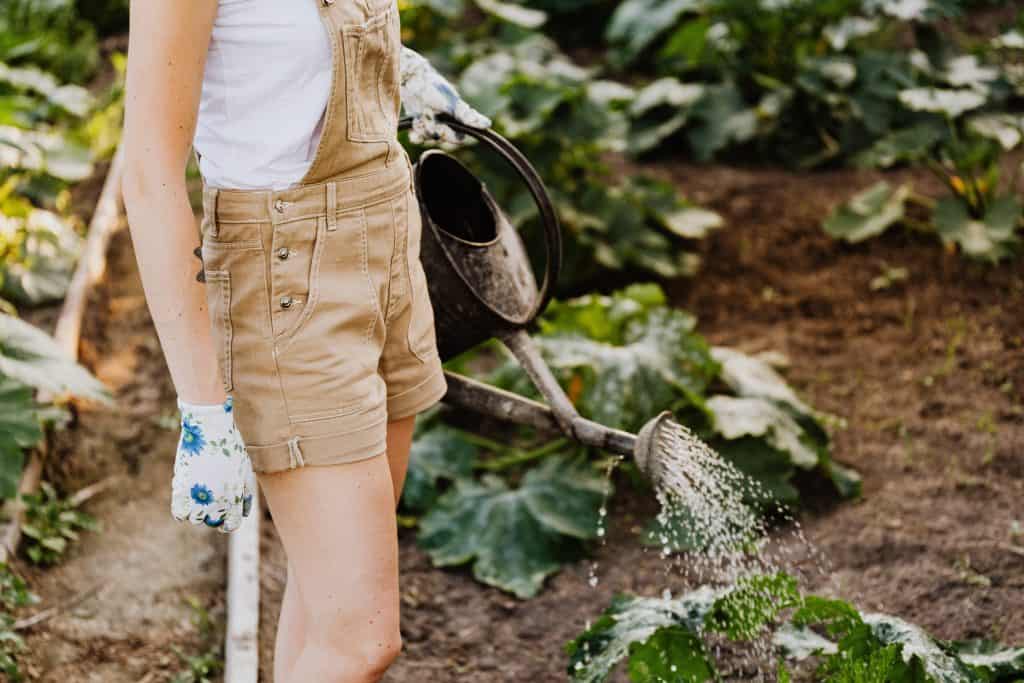
In This Article
- Xeriscaping: Creating a Water-Efficient Landscape
- Native Plant Gardens: Promoting Biodiversity
- Permeable Paving: Reducing Runoff
- Rain Barrels and Rain Gardens: Harvesting Rainwater
- Composting: Nutrient-Rich Soil Amendment
- Organic Pest Control: Keeping the Garden Chemical-Free
- Sustainable Garden Design: Maximizing Space and Resources
- Energy-Efficient Garden Lighting: Solar-Powered Solutions
- Bee-Friendly Landscaping: Supporting Pollinators
- Upcycled Garden Decor: Reducing Waste and Adding Style
In today’s world, the importance of sustainable living and eco-conscious choices has never been more significant. This extends to our gardens, where eco-friendly landscaping practices are gaining popularity. Sustainable gardening not only reduces your environmental footprint but also results in lower maintenance costs and a healthier, more vibrant garden.
In this blog post, we will explore ten eco-friendly landscaping ideas that will help you create a sustainable and environmentally conscious garden.
Xeriscaping: Creating a Water-Efficient Landscape
Xeriscaping is a landscaping approach designed to reduce water usage while maintaining a lush and visually appealing garden. It involves the use of drought-resistant plants and water-efficient irrigation systems. By incorporating xeriscaping into your garden, you not only conserve water but also save on water bills. To get started, consider the following steps:
- Select drought-tolerant plant species that thrive in your region.
- Implement efficient irrigation methods, such as drip irrigation or soaker hoses.
- Apply a layer of mulch to retain moisture and suppress weeds.
Some great choices for drought-resistant plants include lavender, succulents, and ornamental grasses. Xeriscaping not only benefits the environment but also allows you to enjoy a stunning garden with minimal water consumption.
Native Plant Gardens: Promoting Biodiversity
One of the most eco-friendly ways to landscape your garden is by using native plants. Native plants are those naturally occurring in your region, making them well-suited to the local climate and ecosystem. Incorporating native plants into your garden provides several advantages:
- Native plants support local wildlife by attracting pollinators and providing food and shelter.
- They are adapted to the local climate, reducing the need for excessive watering or chemical intervention.
- Promoting native plant growth helps conserve plant diversity and preserve the local ecosystem.
To create a native plant garden:
- Research native plant species that thrive in your area.
- Select a mix of plants that bloom at different times to support pollinators year-round.
- Arrange plants in a visually appealing way, considering their size and colour.
Native plant gardens are not only eco-friendly but also beautiful, creating a harmonious connection between your garden and the natural environment.
Permeable Paving: Reducing Runoff
Permeable paving is a sustainable landscaping technique that addresses the issue of water runoff. Traditional impermeable surfaces like concrete or asphalt can lead to water pooling and soil erosion, causing environmental damage. Permeable paving materials, such as gravel, pavers, or permeable concrete, allow rainwater to pass through, reducing runoff. Here’s how to implement permeable paving:
- Choose permeable materials that suit your garden’s aesthetics and purpose.
- Properly prepare the ground to ensure water infiltration.
- Regularly maintain and clean the permeable surface to prevent clogs.
Permeable paving not only reduces runoff but also helps replenish groundwater, supports healthy soil, and prevents flooding in heavy rain.
Rain Barrels and Rain Gardens: Harvesting Rainwater
Harvesting rainwater is an effective eco-friendly practice that benefits both the environment and your garden. Rain barrels and rain gardens are key elements in this water conservation strategy. Rain barrels collect rainwater from your roof, which can then be used for garden irrigation. Rain gardens are designed to capture and manage rainwater, reducing stormwater runoff. Here’s how to set up rain barrels and rain gardens:
- Install rain barrels under downspouts to collect rainwater.
- Use rainwater from the barrels to irrigate your garden.
- Create a rain garden by excavating a depression and planting water-absorbing vegetation.
Harvesting rainwater reduces the demand for municipal water supplies and helps prevent erosion and pollution by filtering rainwater before it reaches storm drains.
Composting: Nutrient-Rich Soil Amendment
Composting is a cornerstone of sustainable gardening, providing a natural and nutrient-rich soil amendment while reducing organic waste. It’s a simple process that involves decomposing organic materials like kitchen scraps, yard waste, and leaves. Here’s how to get started with composting:
- Choose a suitable location for your compost pile or bin, ideally in a shaded area.
- Layer organic materials, alternating between brown materials (carbon-rich, like dried leaves) and green materials (nitrogen-rich, like kitchen scraps).
- Turn the compost pile regularly to aerate it and speed up decomposition.
Compost is rich in nutrients and enhances soil structure, promoting healthy plant growth. Plus, it reduces the need for chemical fertilizers and diverts organic waste from landfills, reducing greenhouse gas emissions.
Organic Pest Control: Keeping the Garden Chemical-Free
Maintaining a chemical-free garden is a significant step toward sustainable gardening. Traditional pesticides can harm beneficial insects and hurt the environment. Fortunately, there are alternative methods for organic pest control. Here’s how to keep your garden pest-free naturally:
- Companion planting: Pair plants that benefit each other, such as planting marigolds to deter aphids from your vegetable garden.
- Beneficial insects: Attract or release natural predators like ladybugs and lacewings to control garden pests.
- Homemade remedies: Create organic pest control solutions using ingredients like neem oil, garlic, and soap.
By adopting organic pest control methods, you protect your garden’s ecosystem, support pollinators, and maintain a chemical-free environment.
Sustainable Garden Design: Maximizing Space and Resources
Sustainable garden design focuses on efficient use of space and resources, reducing waste, and ensuring a garden that thrives with minimal input. Here are some sustainable garden design principles to consider:
- Vertical gardening: Utilize wall space for climbing plants and vertical gardens, maximizing your planting area.
- Smart layout: Design your garden to reduce the need for excessive mowing and maintenance.
- Crop rotation: Rotate crops to improve soil health and prevent soil depletion.
Sustainable garden design encourages you to work with nature, not against it, and results in a garden that’s easier to maintain and enjoy.
Energy-Efficient Garden Lighting: Solar-Powered Solutions
Solar-powered garden lighting is a smart and eco-friendly way to illuminate your outdoor space. Solar lights use renewable energy from the sun, reducing electricity consumption. Here’s how to incorporate solar lighting into your garden:
- Choose from various types of solar lights, including path lights, string lights, and decorative fixtures.
- Install lights in strategic locations to create ambience and provide safety in the dark.
- Position the solar panels in a spot where they can receive ample sunlight during the day.
Not only do solar lights save on energy bills, but they also create an inviting atmosphere in your garden while minimizing your carbon footprint.
Bee-Friendly Landscaping: Supporting Pollinators
Creating a garden that supports pollinators, especially bees is crucial for ecological balance and plant propagation. Bees are essential for pollinating flowers and crops. Here’s how to make your garden a haven for these valuable insects:
- Plant a variety of flowers with different bloom times to provide nectar and pollen throughout the year.
- Avoid using harmful pesticides that can harm bees and other beneficial insects.
- Provide shelter for bees through bee houses and natural nesting sites.
Supporting pollinators not only aids the environment but also ensures that your garden remains productive and abundant.
Upcycled Garden Decor: Reducing Waste and Adding Style
Eco-friendly landscaping goes beyond the plants; it extends to garden decor. Upcycling is a creative way to repurpose items and reduce waste while adding unique style to your garden. Here are some ideas for upcycled garden decor:
- Convert old wooden pallets into vertical herb gardens.
- Repurpose discarded tires into colourful planters.
- Use old teapots, boots, or other items as quirky and charming garden decorations.
Upcycled garden decor not only adds character to your garden but also reduces the strain on landfills and contributes to a sustainable lifestyle.
Conclusion
Incorporating eco-friendly landscaping ideas into your garden not only benefits the environment but also enhances your outdoor space. From xeriscaping to upcycled garden decor, there are countless ways to create a sustainable garden that conserves resources, promotes biodiversity, and reduces waste. By making these eco-conscious choices, you not only reduce your ecological footprint but also enjoy a more beautiful, thriving, and environmentally responsible garden.



